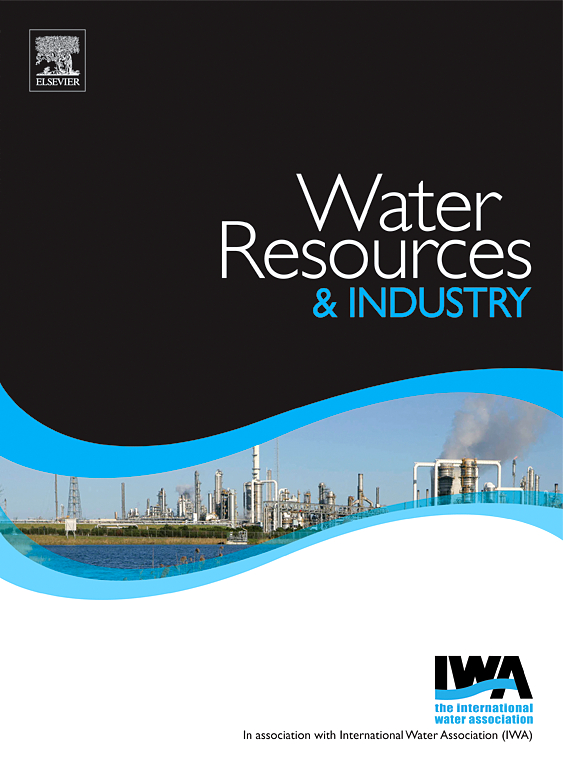优化滴滤系统:生物炼制框架内综合城市污水处理配置的比较分析
IF 7.5
3区 工程技术
Q1 WATER RESOURCES
引用次数: 0
摘要
评估滴流过滤器(TF)与各种配置(如初级沉淀池(PST),微筛选(MS)和离子交换(IE))的集成是一项有价值的研究工作。大多数城市污水处理领域的研究都是对pst和TFs等组分进行单独研究。然而,仔细阅读文献会发现,对PST+TF、PST+ MS +TF或PST+ MS + IE +TF等配置的综合研究有限。考虑到这一差距,德国斯图加特大学的水和废水研究中心建立了一项由上述两种配置和PST + TF系统组成的中试研究,考虑了温度条件的最坏情况,并在两年多的时间里进行了间歇性监测。该研究基于不同的生物负荷,在三种不同的情景下进行,包括非常高的有机和氮负荷率(分别为OLR和NLR);S1 (OLR TCOD m = 3.7公斤−3 d−1,NLR = 2.4 g NH4 + - n m 2 d−−1),S2 (OLR 公斤3.0 = TCOD m 3 d−−1,NLR = 1.4 g NH4 + - n m 2 d−−1),非常赤字,S3 (OLR 公斤1.5 = TCOD m 3 d−−1,NLR = 0.5 g NH4 + - n m 2 d−−1)。由于定义的集成系统由能源和成本效益的方法组成,如MS, IE和TF,它可以帮助促进具有可持续过程性能的生物精炼厂,特别是在水再利用和资源回收途径方面。结果表明,可溶性化学需氧量(SCOD)显著降低,S1、S2和S3的SCOD去除率分别为30 %、50 %和70 %。氮污染物的去除表明,在较低的olr下,硝化作用增强,铵的去除效率分别为20% %,60% %和80% %。在不同的场景下,有机微污染物(MPs)的去除也进行了评估,结果表明,在S3(低负荷场景)下,使用SAK254(波长为254 nm的吸附系数)确定的最大去除效率为40 %。这些结果表明,TF系统即使在亏载条件下也能有效去除污染物,使其成为集成高效节能技术(如MS和IE)的理想选择,以实现可持续和经济高效的废水处理。本文章由计算机程序翻译,如有差异,请以英文原文为准。
Optimizing trickling filter Systems: Comparative analysis of integrated municipal wastewater treatment configurations within a biorefinery framework
Assessing the integration of trickling filter (TF) with various configurations, such as primary settling tanks (PST), microscreening (MS), and ion exchange (IE), is a valuable research endeavor. Most studies in the area of municipal wastewater treatment have researched components like PSTs and TFs individually. However, looking carefully through the literature reveals a limited comprehensive study focused on configurations like PST+TF, PST + MS + TF, or PST + MS + IE + TF. Given this gap, a pilot-scale study consisting of the two mentioned configurations along with the PST + TF system was set up at the water and wastewater research center of the University of Stuttgart, Germany, considering the worst-case scenario for temperature conditions and monitored intermittently over two years. The study was conducted under three different scenarios based on different biological loads, ranging from very high Organic and Nitrogen Loading Rate (OLR and NLR, respectively); S1 (OLR = 3.7 kg TCOD m−3 d−1, NLR = 2.4 g NH4+-N m−2 d−1), S2 (OLR = 3.0 kg TCOD m−3 d−1, NLR = 1.4 g NH4+-N m−2 d−1), down to very deficit, S3 (OLR = 1.5 kg TCOD m−3 d−1, NLR = 0.5 g NH4+-N m−2 d−1). Since the defined integrated system consists of energy and cost-effective methods like MS, IE, and TF, it can help to promote a biorefinery with sustainable process performance, particularly in terms of water reuse and resource recovery pathways. The results showed significant reductions in soluble chemical oxygen demand (SCOD), with SCOD removal efficiencies of 30 %, 50 %, and 70 % for S1, S2, and S3, respectively. Nitrogenous pollutant removal demonstrated enhanced nitrification at lower OLRs, with ammonium removal efficiencies of 20 %, 60 %, and 80 % across scenarios. Organic micropollutants (MPs) removal was also assessed under different scenarios, with results indicating that a maximum removal efficiency of 40 % is achievable under S3 (low-loaded scenario), as determined using SAK254 (adsorption coefficient at a wavelength of 254 nm). These results demonstrate the TF system's capacity to effectively remove pollutants under even deficit loading conditions, making it an ideal choice for integrating energy-efficient technologies, such as MS and IE, for sustainable and cost-effective wastewater treatment.
求助全文
通过发布文献求助,成功后即可免费获取论文全文。
去求助
来源期刊

Water Resources and Industry
Social Sciences-Geography, Planning and Development
CiteScore
8.10
自引率
5.90%
发文量
23
审稿时长
75 days
期刊介绍:
Water Resources and Industry moves research to innovation by focusing on the role industry plays in the exploitation, management and treatment of water resources. Different industries use radically different water resources in their production processes, while they produce, treat and dispose a wide variety of wastewater qualities. Depending on the geographical location of the facilities, the impact on the local resources will vary, pre-empting the applicability of one single approach. The aims and scope of the journal include: -Industrial water footprint assessment - an evaluation of tools and methodologies -What constitutes good corporate governance and policy and how to evaluate water-related risk -What constitutes good stakeholder collaboration and engagement -New technologies enabling companies to better manage water resources -Integration of water and energy and of water treatment and production processes in industry
 求助内容:
求助内容: 应助结果提醒方式:
应助结果提醒方式:


